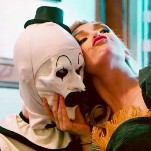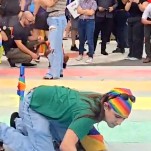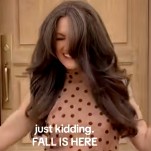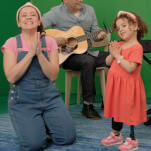How To Make A Custom Dress Form: Part One
LatestTo any home sewer and pattern-drafter, the appeal of a custom dress form is obvious. Commercial forms don’t resemble the human body in the slightest: nobody I’ve ever met has that weird, smooth monoboob like on the Wolf forms, nor that cleft-less so-called “ass.” Plus, those things are like $400 used. Adjustable forms, though cheaper, are if anything even more limited. They collapse when you’re trying to pin things to them, their articulated planes wobble out of alignment, they are riddled with gaps, they suck.
To anyone who makes her own patterns or often adjusts commercial sewing patterns, the whole idea of a commercially made dress form becomes questionable. A body’s circumference measurements — bust, waist, and hips — are of much less importance when draping a garment than a body’s specific shape and posture. The shoulders are key, since most clothing hangs from them. And as Yohji Yamamoto once wrote, “The shapes of the human shoulder are as numerous as the types of faces.” So why not have a form that has your shoulders? If you, like me, sew mostly for yourself, then you have certainly craved a dress form that mimics not only your dimensions, but your body’s particular way of holding itself. Your distribution of heft. Your scoliosis. All the asymmetries and features you’ve spent years taking into account when altering commercial patterns. (Perhaps you’ve craved such a dress form during one of those long sessions spent in front of the full-length mirror, trying to pin a bolt of fabric to your polypropylene long underwear in order to drape a garment? Oh, that’s just me? Okay.) A custom dress form is not the easiest thing in the world to make, but it’s within the grasp of any home sewer with two weekends to spare. Come see how I made mine. This is Part I of a two-part tutorial. For Part II, click here.
This is part one of a two-part project. To complete both parts and make one dress form, you will need: 6-8 rolls of plaster bandages (I used some brand called “Carapace,” which I bought in a twelve-pack on eBay for like $15); 4-6 cans of expanding closed-cell insulation foam (I used something from Home Depot called “Great Stuff Big Gap Filler,” helpfully marked “For Gaps Over 1 Inch”); strong thread or twine; polyurethane varnish or other sealant; eye protection; a face mask; a set of rubber gloves; an old putty knife you don’t mind getting wrecked; an old paintbrush; an old pair of craft scissors; a pair of bandage scissors; a container of water; a hacksaw; extra hacksaw blades (‘cus why not); a large drop-cloth. And, not pictured: a meter or so of plain, medium-weight fabric, such as canvas or muslin; an adjustable-height IV stand on castor wheels; and a friend, activity partner, or assistant.
The process is pretty straightforward. To make a durable, springy, handsome dress form, we’re going to first cast the body in plaster, then create a mold from the plaster cast. Then, we’ll fill that mold with foam, mount it on a base, remove the plaster once the foam cures, and cover the resulting form in canvas or a similar fabric.
Part one, this week, covers the plaster casting and the making of the mold. Part two, next week, covers the filling of the mold and the mounting of the form. Both parts together will take about a week — only fifteen or so hours of which is active, crafting time. (Catch up on a bunch of podcasts — I love Julie Klausner‘s! — or set your music-delivery system to “shuffle.”)
Part one, step one is to cut your plaster bandages into usable strips. I found that a mixture of 12″ strips, 9″ strips, 6″ strips, and 3″ strips was perfect. On your drop-cloth, arrange the strips within easy reach, and fill your container with water.
-

-

-

-

-

-

-

-

-

-

-

-

-

-

-

-

-

-

-

-

-

-

-

-

-

-

-

-

-

-

-

-

-

-

-

-

-

-

-

-








































